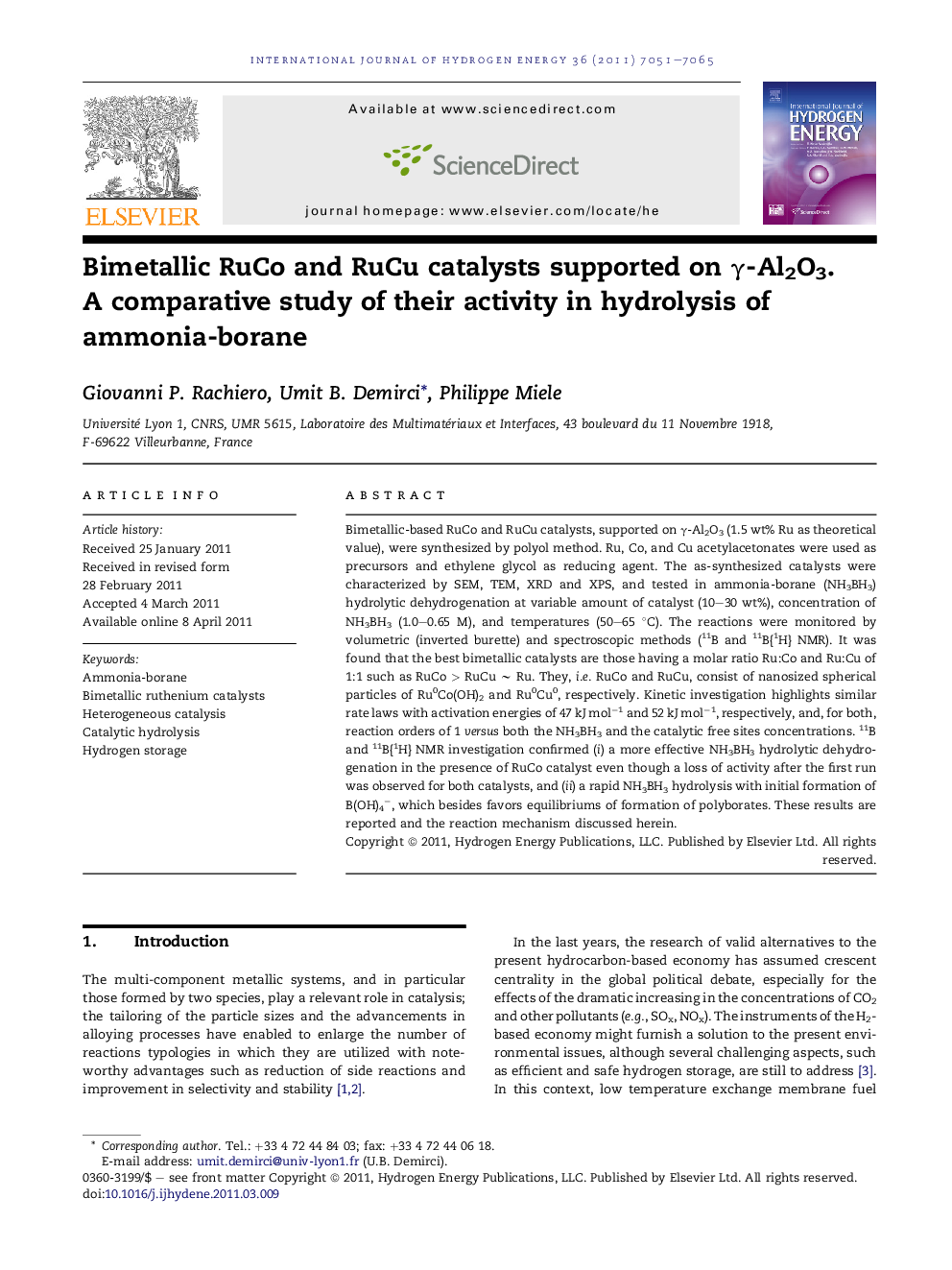| Article ID | Journal | Published Year | Pages | File Type |
|---|---|---|---|---|
| 1272093 | International Journal of Hydrogen Energy | 2011 | 15 Pages |
Bimetallic-based RuCo and RuCu catalysts, supported on γ-Al2O3 (1.5 wt% Ru as theoretical value), were synthesized by polyol method. Ru, Co, and Cu acetylacetonates were used as precursors and ethylene glycol as reducing agent. The as-synthesized catalysts were characterized by SEM, TEM, XRD and XPS, and tested in ammonia-borane (NH3BH3) hydrolytic dehydrogenation at variable amount of catalyst (10–30 wt%), concentration of NH3BH3 (1.0–0.65 M), and temperatures (50–65 °C). The reactions were monitored by volumetric (inverted burette) and spectroscopic methods (11B and 11B{1H} NMR). It was found that the best bimetallic catalysts are those having a molar ratio Ru:Co and Ru:Cu of 1:1 such as RuCo > RuCu ∼ Ru. They, i.e. RuCo and RuCu, consist of nanosized spherical particles of Ru0Co(OH)2 and Ru0Cu0, respectively. Kinetic investigation highlights similar rate laws with activation energies of 47 kJ mol−1 and 52 kJ mol−1, respectively, and, for both, reaction orders of 1 versus both the NH3BH3 and the catalytic free sites concentrations. 11B and 11B{1H} NMR investigation confirmed (i) a more effective NH3BH3 hydrolytic dehydrogenation in the presence of RuCo catalyst even though a loss of activity after the first run was observed for both catalysts, and (ii) a rapid NH3BH3 hydrolysis with initial formation of B(OH)4−, which besides favors equilibriums of formation of polyborates. These results are reported and the reaction mechanism discussed herein.
